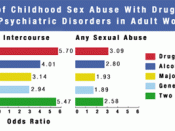Predictor Variables of Teenage Pregnancy and Effectiveness of Prevention Programs.
Each year approximately one million U.S. teenagers become pregnant -- 11 percent of all women aged 15 to 19 and 20 percent of those who are sexually active become pregnant (AGI, 1998). There are many researched predictor variables associated with teenage pregnancy. Included are self-perception, household statistics, child abuse, athleticism, and intent. This research report highlights these trends of indicators or teenage pregnancy in addition to the effectiveness of a variety of different pregnancy prevention program.
Young, Martin, Young and Ting (2001) applied two theory's regarding teenage girl's self-perception: Bandura's (1994) theory of self-efficacy and Rotter's concept of locus of control. Self-efficacy is defined as a person's beliefs about his or her ability to attain particular goals. It has been found to impact the coping ability and behaviors of the individual (Bandura, 1994). Locus of control is a concept describing whether people feel that control of their lives rests in their own hands (internal locus of control) or in the hands of others (external locus of control) (Rotter, 1966).
Through data collected by the National Education Longitudinal Study (NELS), Young, Martin, Young and Ting (2001) research of several thousand females showed that females who became pregnant later in life ANOVA results, indicated that there was a statistically significant difference in locus of control between the two groups (F = 64.42, p = .0001). Females who later became pregnant scored lower (M = 15.637) on this scale than did those who did not become pregnant (M = 16.670), with a lower score indicating a more external locus of control. ANOVA results also revealed a statistically significant difference in personal efficacy between the two groups (F = 42.07, p = .0001). Personal efficacy was lower in females who later became...



Well researched essay
This was an excellent discussion of teenage pregnancy. Prevention programs are vital because of the devastating effects an unwanted pregnancy can have on the mother and infant. My only recommendation would be to add headings to the essay.
6 out of 6 people found this comment useful.